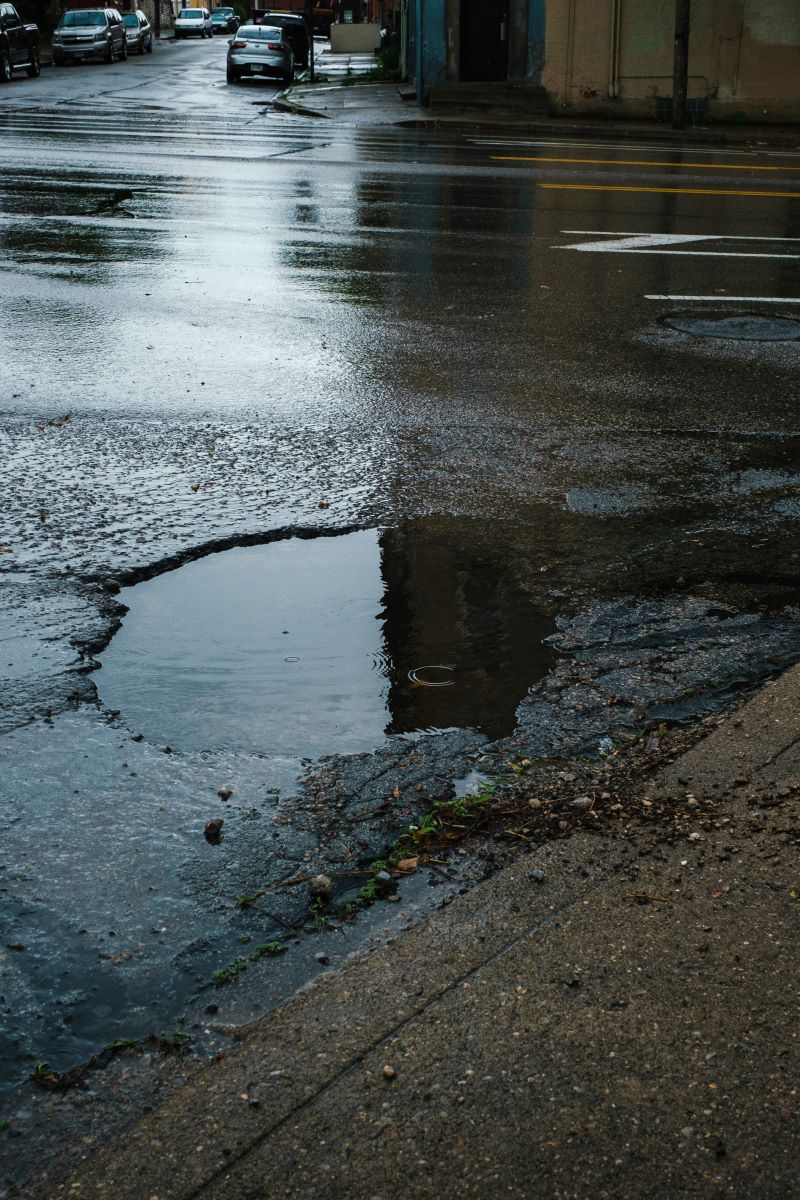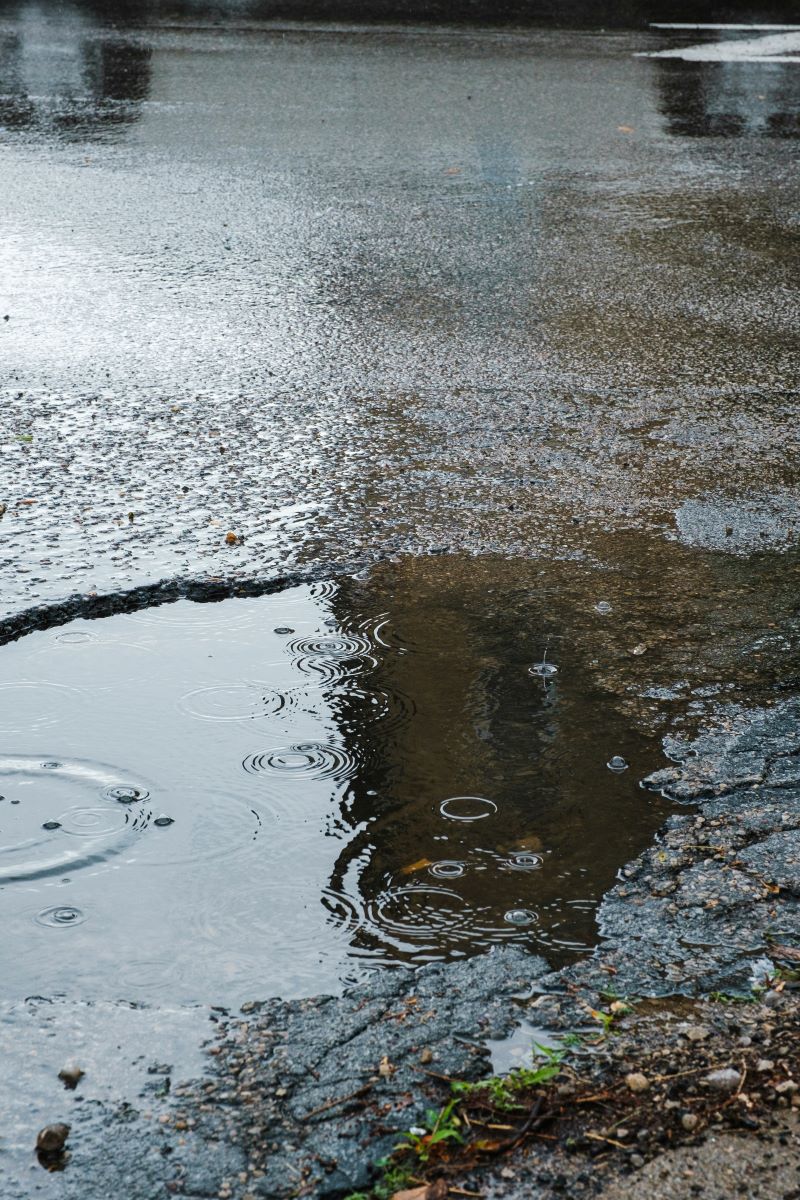Potholes in South Africa: What They Are, How to Navigate Them, and What to Do If They Cause Damage
Potholes are a common challenge for South African drivers. They damage vehicles and endanger safety. To stay safe, understand how potholes form and learn how to navigate them by following the below pothole safety tips. Additionally, know what to do if your vehicle is affected.
How Potholes Form in South Africa
In South Africa, potholes mainly form due to water infiltration, traffic stress, and poor road maintenance, unlike in some countries where freezing water contributes. Here’s how they form:
- Water Infiltration: When rainwater seeps into cracks and crevices in the road, it weakens the surface. This is particularly problematic in areas with heavy rainfall, which is common in regions like the Eastern Cape and KwaZulu-Natal. Over time, this moisture erodes the road structure, causing sections to break apart.
- Traffic Stress: High volumes of traffic, especially heavy vehicles like trucks, put pressure on road surfaces. This constant stress further deteriorates the road, making it more susceptible to cracking and breaking.
- Lack of Maintenance: Many roads, particularly in rural areas, suffer from inadequate maintenance. Without regular repairs or resurfacing, roads deteriorate, creating larger cracks that eventually lead to potholes.
- Heat and Drought: In drier regions where rain is less frequent, the intense heat can cause roads to expand and contract. This constant movement can cause cracks to form, and over time, those cracks widen, leading to potholes.
How to Navigate Roads with Potholes
If you’re driving on a road that’s riddled with potholes, it’s important to stay alert and use the following strategies to minimize the risk of damaging your vehicle and ensure a safe journey:
- Slow Down: The faster you drive, the harder the impact of a pothole. When you notice a pothole or an uneven road surface, reduce your speed to give yourself more time to react. Slowing down also reduces the risk of damaging your suspension, tires, and rims.
- Stay in Your Lane: If the potholes are scattered along the road, avoid swerving suddenly to miss them. Swerving can put you in the path of oncoming traffic or cause you to lose control of your vehicle. Instead, safely steer within your lane and slow down.
- Maintain Proper Tire Pressure: Over- or under-inflated tires are more prone to damage when they hit a pothole. Ensure that your tire pressure is at the recommended level to absorb the shock more effectively and reduce the risk of punctures or blowouts.
- Keep a Safe Distance: Potholes can be difficult to spot in advance, especially when driving behind another vehicle. Keep a safe distance from other cars to give yourself more time to react to any sudden obstacles in the road.
- Use Your Headlights in Poor Visibility: If you’re driving in poor weather conditions like rain or fog, ensure your headlights are on. This will help you spot potholes sooner, giving you more time to adjust your speed.
- Scan the Road: Always keep an eye on the road ahead. Potholes can often be hidden by water, dust, or shadows, so being alert and scanning the road carefully will help you spot them in time to avoid damage.
What to Do If a Pothole Causes Damage
If you do hit a pothole and your vehicle is damaged, it’s important to stay calm and know the steps to take. Here’s what to do:
- Check Your Vehicle: After hitting a pothole, pull over safely and check for immediate signs of damage. This could include a flat tire, bent rim, or unusual sounds when you drive. If you feel vibrations or hear strange noises coming from the tire, it’s likely that the tire or rim is damaged.
- If Your Tire Is Flat:
- Stop Safely: If your tire is flat, pull over to the side of the road, away from traffic. Turn on your hazard lights to signal that you’re stopping.
- Assess the Damage: If you have a spare tire and tools, you may be able to change it on the spot. If not, contact roadside assistance or a towing service for help.
- Avoid Driving on a Flat Tire: If you continue to drive on a flat tire, you risk damaging your rim and the suspension system. Driving on a flat tire is dangerous, so ensure you stop as soon as possible.
- If Your Rim Is Bent or Damaged:
- Inspect the Rim: If your rim is visibly bent or damaged, driving on it may not be safe, even if the tire doesn’t appear flat. A damaged rim can cause the tire to lose air or even burst, so it’s essential to address this issue quickly.
- Call for Assistance: In the case of rim damage, it’s best to call for roadside assistance or a tow truck. Trying to drive on a damaged rim can cause further harm to your vehicle.
- If You Experience Steering or Suspension Issues:
- Steering Problems: If you experience difficulty steering after hitting a pothole (such as pulling to one side or a vibrating steering wheel), your alignment or suspension may have been affected. Stop your vehicle in a safe area and assess the situation.
- Get It Checked: For any issues related to steering or suspension, it’s best to have your car checked by a professional mechanic before continuing your journey.
How to Safely Get the Car to a Stop After a Pothole Incident
If you notice damage after hitting a pothole, here’s how to safely stop your vehicle:
- Stay Calm and Pull Over: If your car feels unstable, or if you hear or feel something unusual, slow down and pull over to a safe spot away from traffic. Use your hazard lights to alert other drivers that you’re having trouble.
- Avoid Sudden Movements: If the damage affects your vehicle’s handling, avoid sudden steering movements or sharp braking. This could worsen the situation and lead to loss of control. Instead, brake gently and steer slowly.
- Assess the Situation: Once safely pulled over, inspect your vehicle for visible damage (flat tire, bent rim, unusual sounds, etc.). If you’re not sure what’s wrong, it’s best to call a professional for assistance.
- Roadside Assistance: If you don’t have the tools to fix a flat tire or if you suspect more serious damage, contact a roadside assistance service or your insurer to get help.
More safety tips from Arrive Alive: https://www.arrivealive.mobi/safe-driving-on-roads-with-potholes-and-avoiding-pothole-damage



This website has really assisted me recently. I wanted to drive down to Richards Bay from Vyheid and I found out that the R34 between Melmoth and Richards Bay is bad. So I avoided the route and had a much better driving experience!